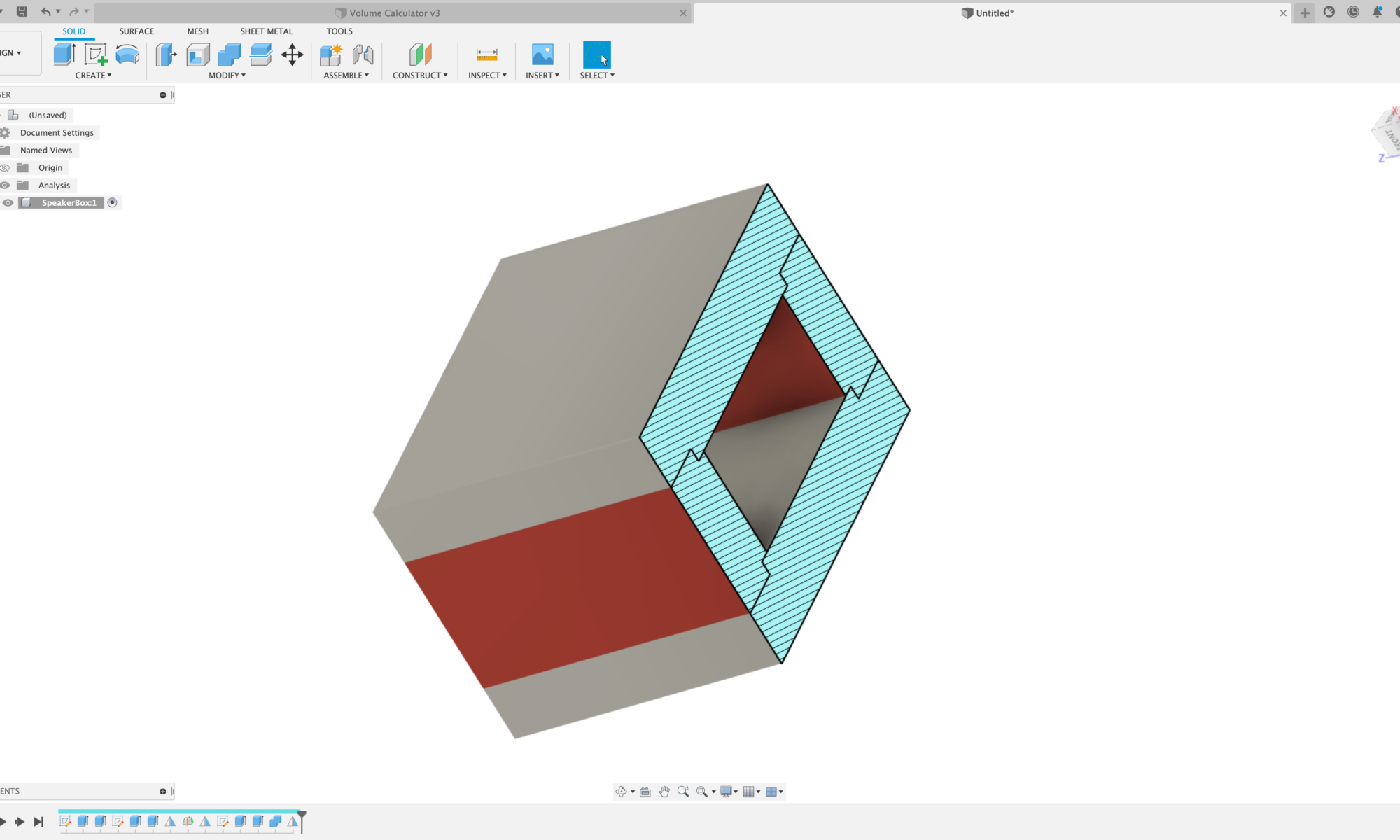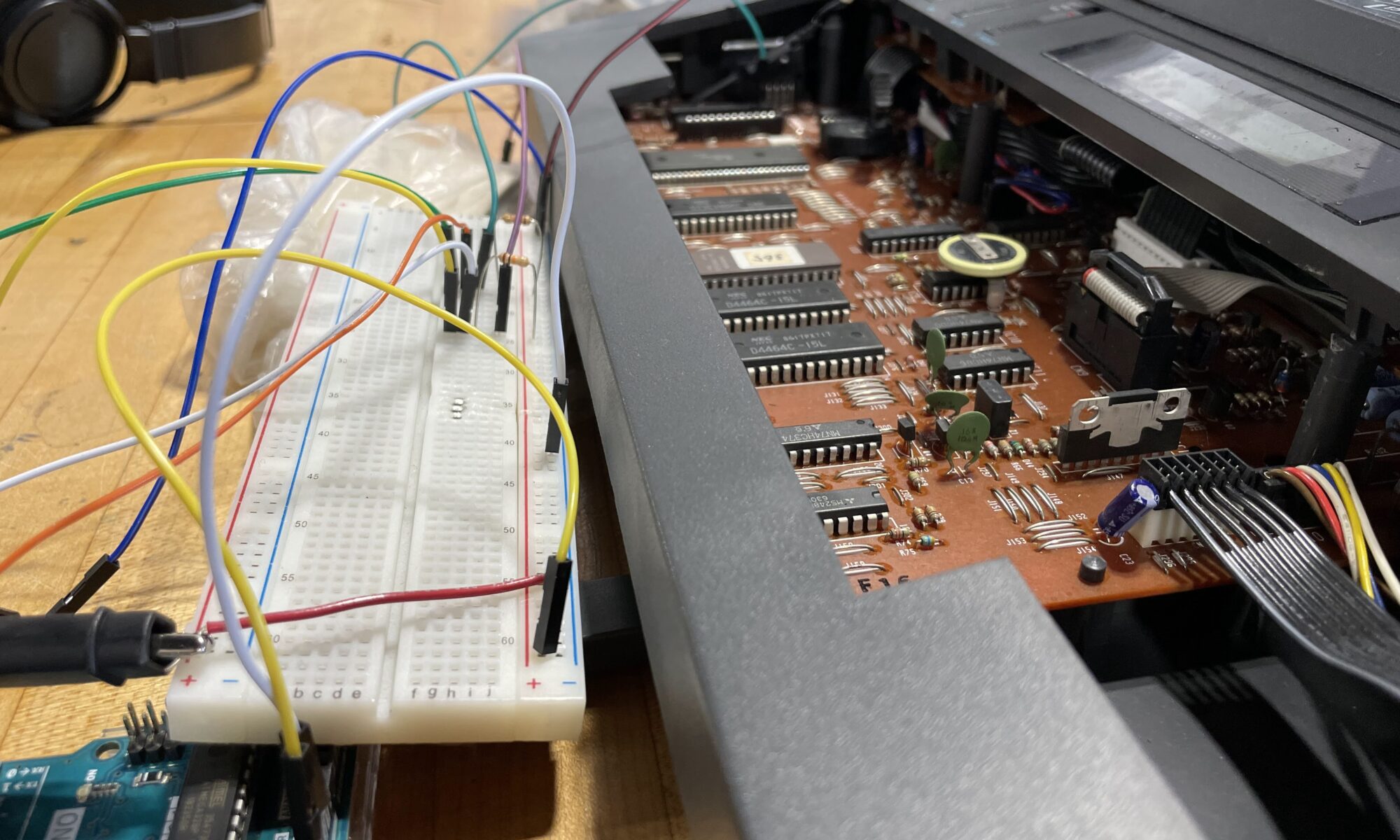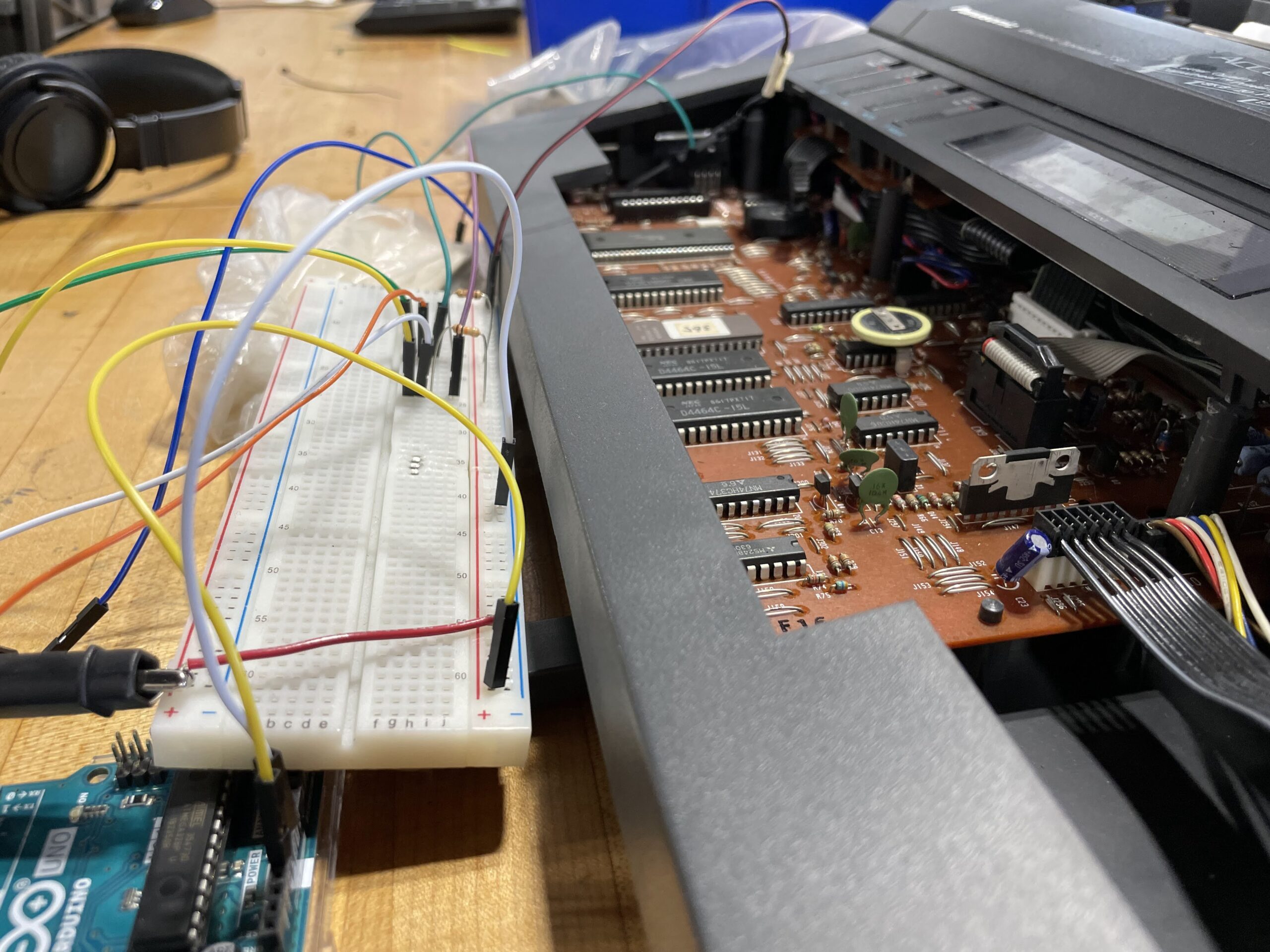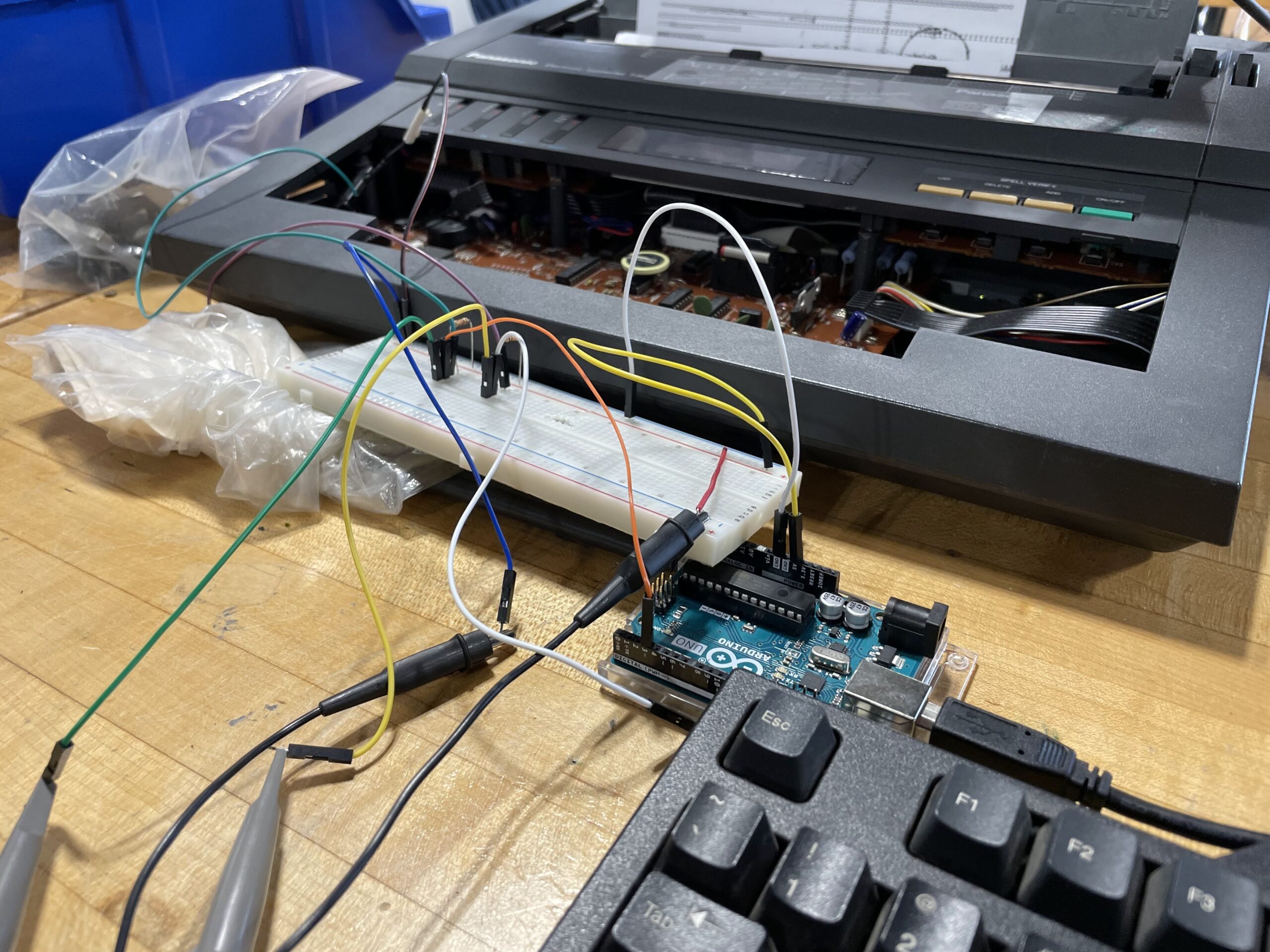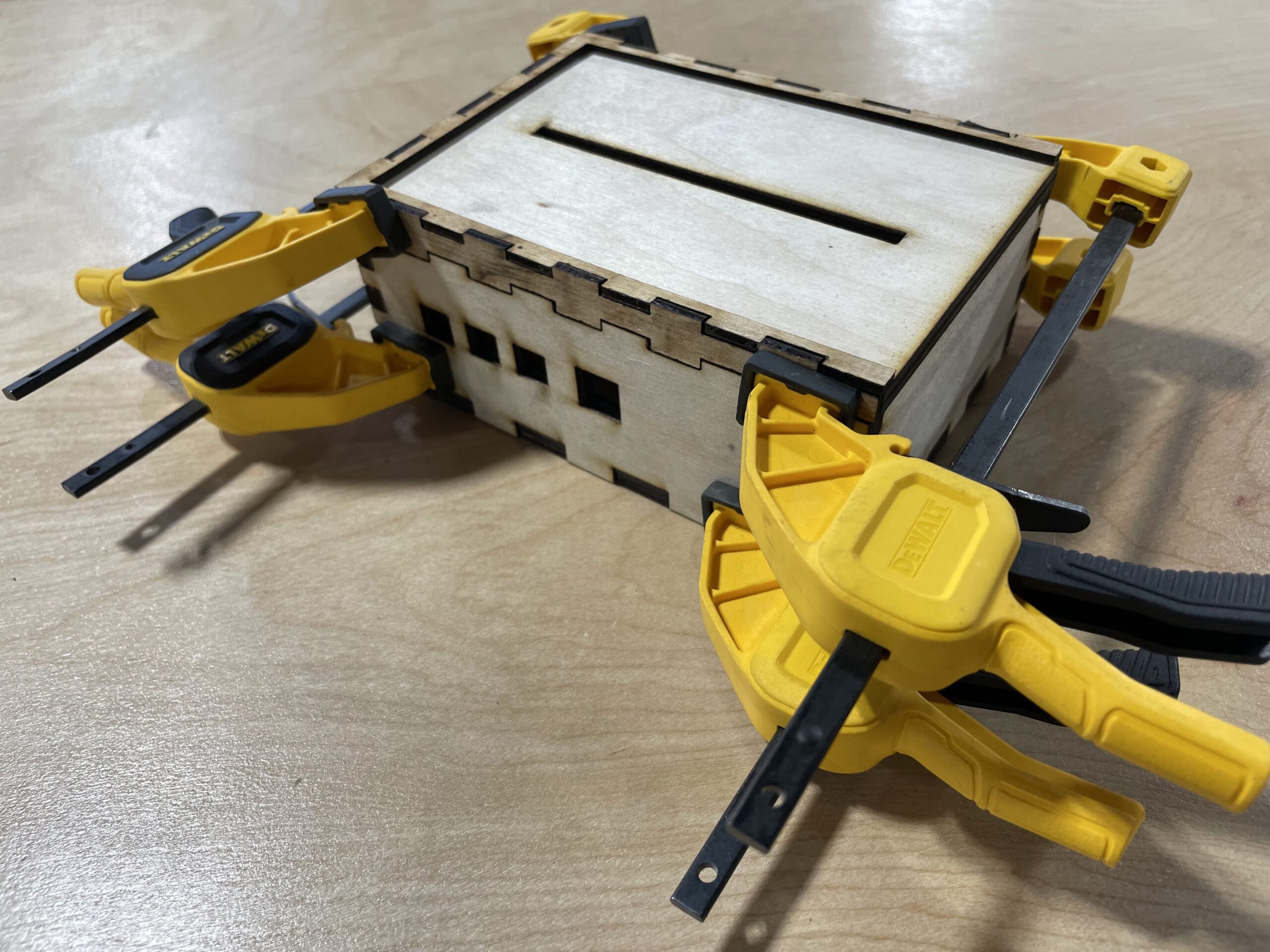One of my favorite aspects of my job is solving a problem we have never before encountered. Luckily, this happens nearly every day as students are building various types of projects of their own design, such as candy shooters and singing toothbrushes.
A senior was having problems building a box for a bluetooth speaker setup they were working on, as they were trying to understand how to build the box with the proper volume specified for the speakers he was using. He was taking measurements, putting them into CAD, but when things changed within his project, he would have to change all his dimensions again and it was a real tedious task.
Working together we were able to solve the problem using parameters in Fusion 360. We utilize Fusion 360 for all our CAD needs in the classroom. It’s an easy to learn, robust software with built-in CAM that enables us to send our models to all the different machines we have in the shop – 3D printers, waterjet, plasma cutter, mills, lathes, etc. It’s also free software, and I have the ability to setup an educational account and give access to all my students, rather than having each student setup their own personal account. I really like the way they have the new educational account setup for teachers and students, makes life much easier than before where students needed to verify their accounts which was often problematic.
Back to the parameters discussion. By utilizing parameters in Fusion 360 along with an organized modeling strategy, we found a way to control the volume of the box so it always remains constant, even when we change the length, width, or size of material. Below is a screenshot of the parameter setup for the project. You’ll notice some odd math happening, as there are several instances of multiplying 1 in within an expression. This is because Fusion 360 does not have in² or in³ within its parameters framework, so you need to use the 1 in to cancel out parts of an expression so it has the same units Fusion 360 can work with.
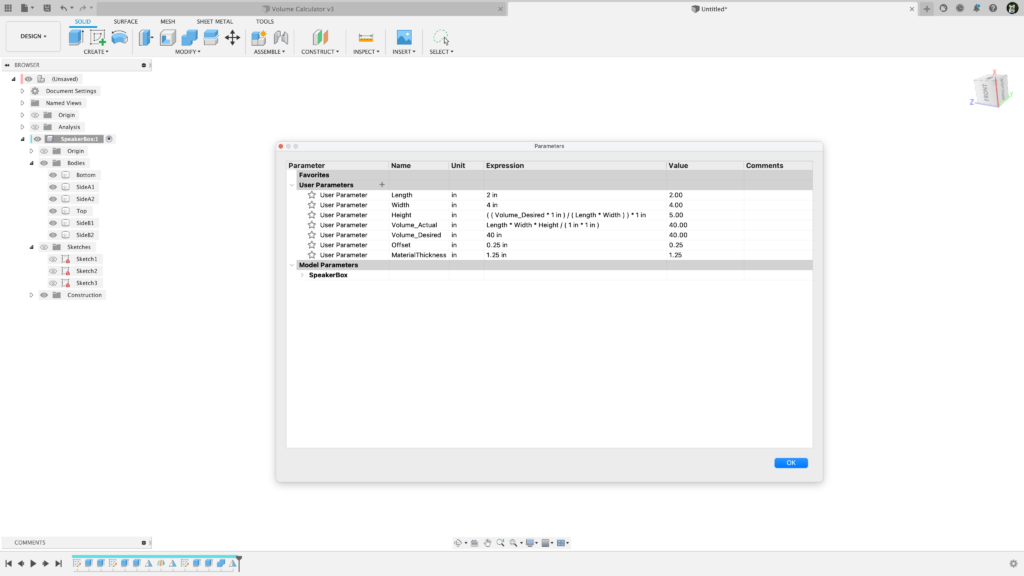
I went ahead and created a quick modeling video for students, so in the future I can just point them to the video instead of showing them directly, which frees me up to help other students in our classroom. Video below.

